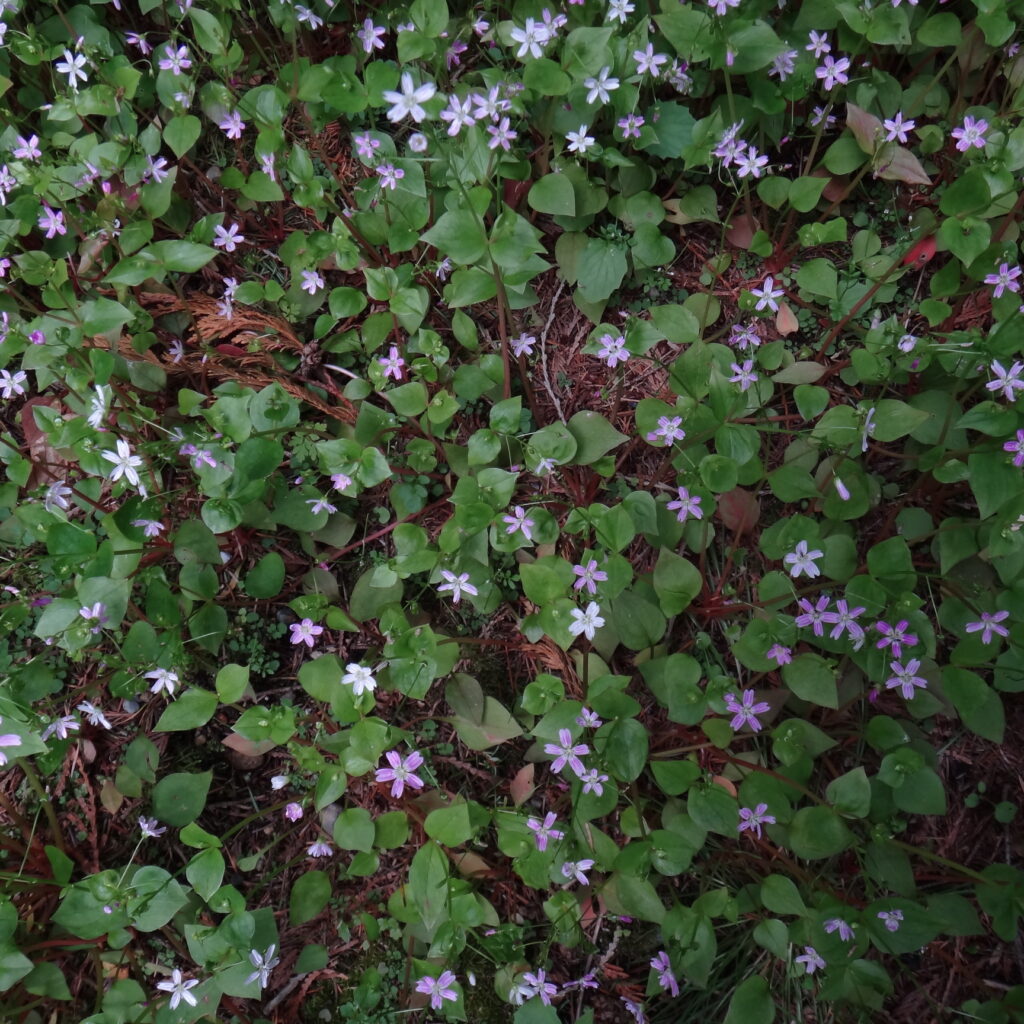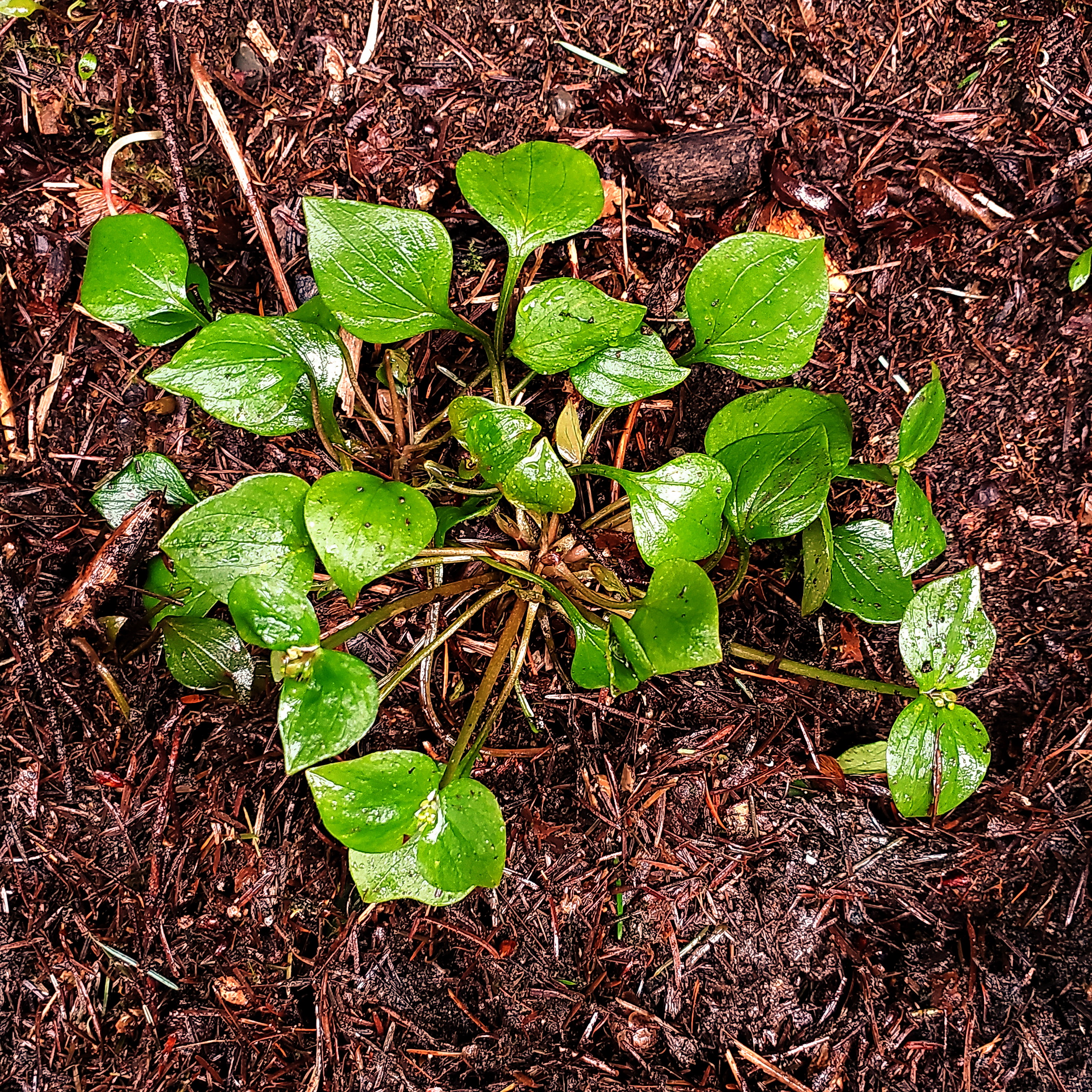Recently, two other forest restorationist volunteers and I walked around Forest Park looking at where our efforts have worked and where they have not. Among other things, we surveyed areas that had been cleared of blanket Ivy to see if native groundcovers had come back with enough density to deter weeds. Only two had — one by False Lily of the Valley and the other by Pacific Bleeding Heart. Presumably, remnant populations of those two native plants had survived being covered by thick Ivy and were able to spread quickly after it was gone. Neither of these two areas had been replanted or mulched after clearing. In contrast, a dozen cleared areas that had been replanted and mulched only had sparse groundcovers. Does sheet mulching with wood chips deter the natural regeneration of native groundcovers?
Mulching with raw plant material, like wood chips, reduces evaporation of moisture from the soil and smothers some small weeds by reducing their air supply and blocking sunlight. However, if the objective is establishing a dense groundcover, there are several negative factors associated with mulch which may outweigh the benefits.
- Several unwanted species, including Herb Robert and non-native grasses, are able to establish themselves on top of mulch, and in this way actually increase the spread of weeds.
- The saprophytic fungi that decompose the cellulose in mulch use up most of the nitrogen in the top layer of soil making life difficult for new seedlings, both native and non-native.
- The saprophytic fungi can also deter the beneficial mycorrhizal fungi that help plants access soil nutrients and water.
I have been astonished how quickly certain native plants spread into areas cleared of blanket Ivy. Some, Candyflower for example, seem to have minimal root systems, leading me to believe that they must rely heavily on the support of mycorrhizal fungi. When we observe the rampant spread of native groundcovers, we are probably also witnessing the simultaneous spread of native mycorrhizae.

Speaking for myself, I’ve added sheet mulching to the list of backyard forest restoration practices that I have begun to question. For many years, I simply accepted Forterra’s model of “clear invasives, plant natives, and mulch with wood chips.” More and more, however, I find greater value in the methods developed by the Bradley sisters, expanding narrow strips of cleared ground at the same slow pace that native plants fill the gaps with natural regeneration. These natural processes, though they may seem slow in “people time,” are actually proceeding at amazing speed in “forest time.”
